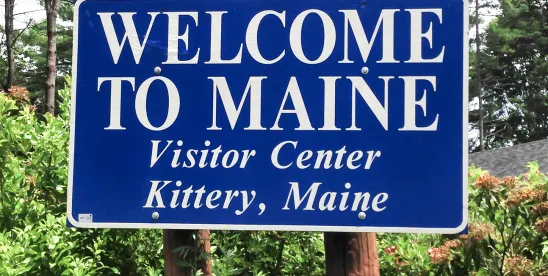The Maine Department of Labor announced proposed rulemaking on May 20, 2024, to implement the upcoming Maine Paid Family and Medical Leave Program.
Maine DOL’s rulemaking has been expected following the Maine Legislature’s passage of the new law in 2023. Employees can begin receiving paid leave benefits effective on May 1, 2026, and employer contributions to the plan funding those benefits begins on January 1, 2025. The proposed rules are not final. Public comment will be open through July 8, 2024, and can be submitted here.
The proposed rules provide greater detail as to how the Maine DOL plans to implement and enforce the new program. The program allows Maine employees up to 12 weeks of family and medical leave benefits over a one-year period.
Covered Employees
Under the proposed rules, covered employees will be defined as: (1) employees who earn wages paid in Maine at least six times the state average weekly wage during the first four of the last five completed calendar quarters immediately preceding the first day of an individual’s benefit year, and who are not otherwise excluded; or (2) individuals who voluntarily elect coverage. Employees may utilize these benefits by taking continuous leave, intermittent leave, or reduced schedule leave. Both intermittent and reduced schedule leave will be prorated against the full 12-week leave allotment under the law but leave may not be taken in increments of less than a workday without the employer’s agreement.
Applications for benefits
In order to receive benefits, the proposed rules explain that a covered employee must submit an application for benefits no more than 60 days before nor 90 days after the start date of the leave. Absent an emergency, illness, or other sudden necessity for taking leave, an employee must give reasonable notice to the employee’s supervisor of the employee’s intent to use leave, generally 30 days before the leave begins. If the request for leave is not foreseeable due to emergency, illness, or other sudden necessity, an employee must make a good faith effort to provide written notice to the employer of the employee’s intent to use leave as soon as is feasible under the circumstances. The notice must state the reason for the leave being requested (family, medical, safe leave, or qualifying exigency); the type of leave needed (continuous, reduced schedule, or intermittent leave); actual or anticipated timing and duration of leave; any other relevant details regarding the employee’s need to take leave.
Undue hardship
While employees are required to schedule leave, the proposed rules explain that the employer bears the burden to prove the undue hardship. “Undue hardship,” as defined in the proposed rules, means a significant impact on the operation of the business or significant expenses, considering the financial resources of the employer, the size of the workforce, and the nature of the industry. An employer’s determination of undue hardship will not be considered reasonable unless the following are established: (1) the employer provided a written explanation of the undue hardship to the employee; (2) the employee retains the ability to take leave within a reasonable time frame relative to the proposed schedule; and (3) the employer has made a good faith attempt to work out a schedule for such leave that meets the employee’s needs without unduly disrupting the employer’s operations, subject to the approval of the employee’s health care provider. Employers and employees will be entitled to appeal the administrator’s decisions to a DOL hearing officer and, following this appeal, may seek review in the Superior Court.
Job restoration
Employees employed for at least 120 consecutive days are generally entitled to job restoration upon return from leave. Employers must return the employee to the position the employee previously held or to an equivalent position with equivalent benefits, pay, and other terms and conditions of employment.
Applications for benefits
Employees can submit applications for paid family and medical leave benefits online once benefits become available. The plan administrator will notify employers within five business days of an application by an employee. Employers will have 10 days to submit documentation or information that it wishes the administrator to consider.
Employer premiums
Benefits will be financed by a mandatory “premium” based on employee wages of up to 1%, to be split evenly between employee and employer, with each bearing a maximum burden of 0.5% of weekly wages as a premium. Maine employers with fewer than 15 employees will not be subject to the payment of the employer’s portion of the premium, though they will still be obliged to collect and remit the employee portion. While coverage is delayed until the May 1, 2026, start date, Maine employers and employees will begin paying the 1% premium beginning on January 1, 2025. Employer premium payments and contribution reports will be due on or before the last day of the month following the close of the quarter. DOL will provide employers forms for submission. Employer premiums will be required up to the contribution and benefit base limit established annually by the federal Social Security Administration for purposes of the federal Old-Age, Survivors, and Disability Insurance program limits pursuant to 42 U.S.C. § 430. An employer’s size for purposes of calculating their premium liability for each year will be calculated based upon the number of employees employed within Maine on October 1 of the previous year.
Private plans
The proposed rules explain that employers will be eligible to substitute both fully insured and self-insured plans for participation in the DOL-administered public program. DOL will process approvals for substitution of private plans and will be valid for three years. Applications for substitution of a private plan will begin to be accepted on January 1, 2026. DOL will provide forms for submission of this application. Approved plans must be substantially equivalent to the protections and benefits available under the public plan.




 />i
/>i
